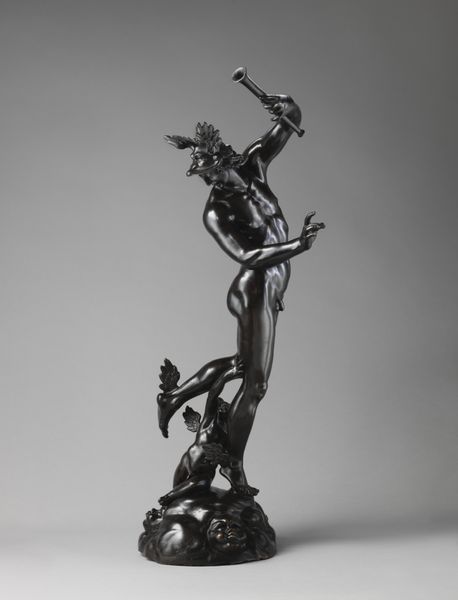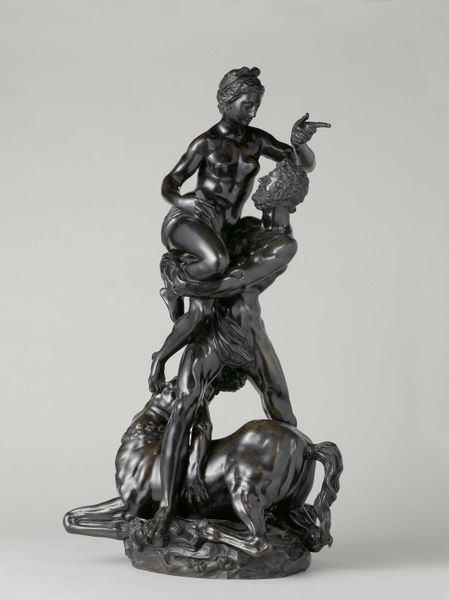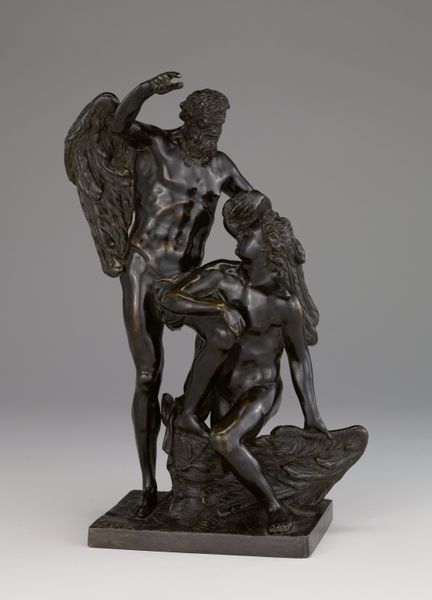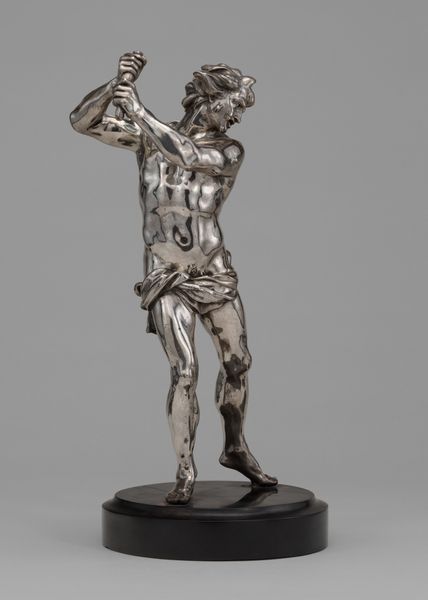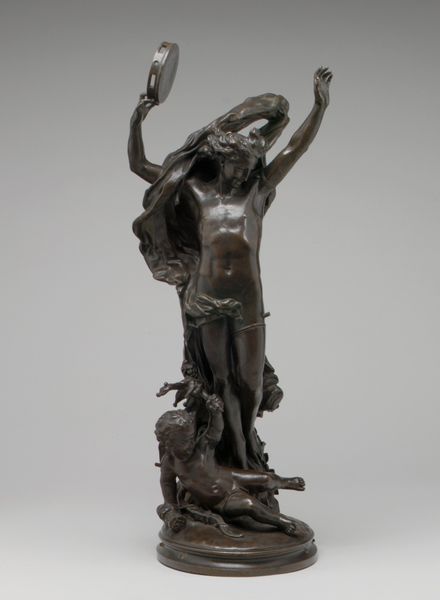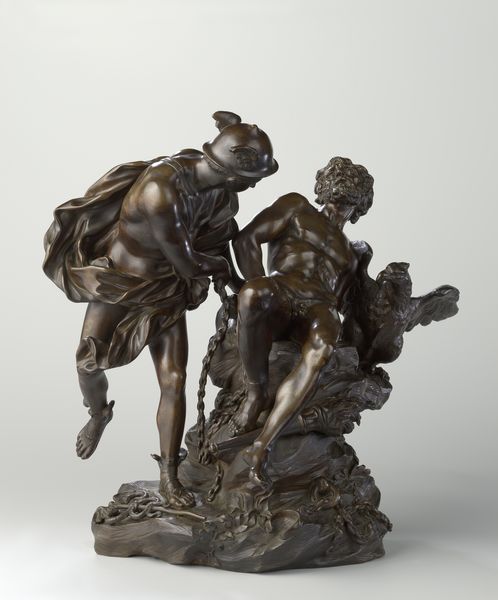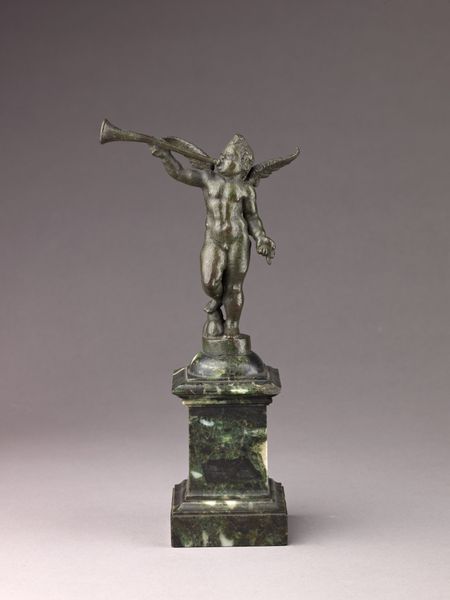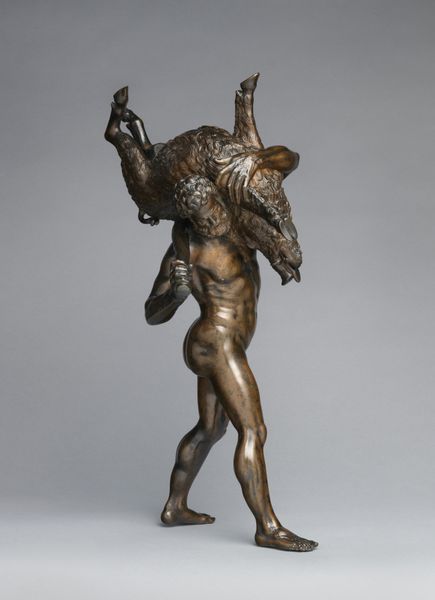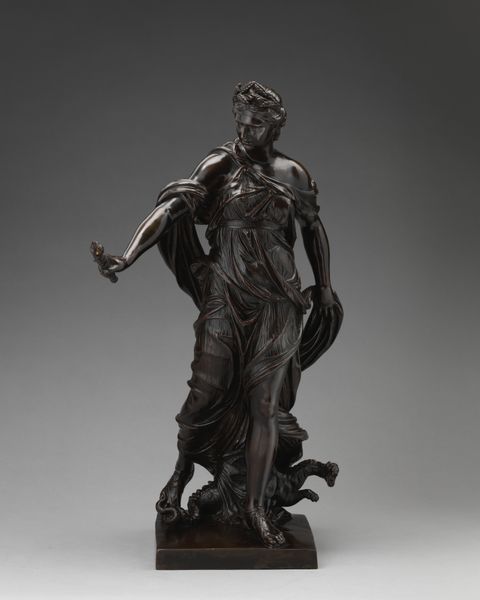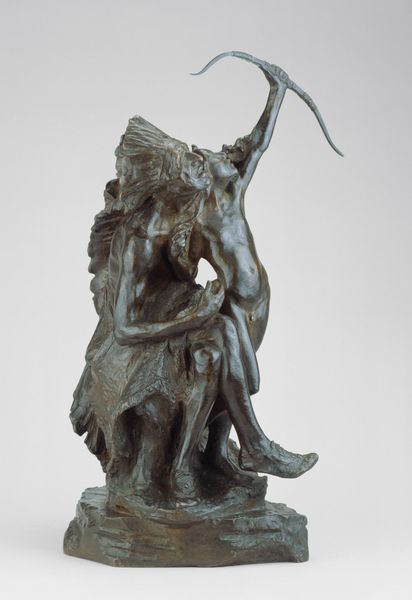
bronze, sculpture
#
sculpture
#
bronze
#
figuration
#
sculpture
#
symbolism
#
academic-art
#
nude
Dimensions: overall: 69.85 × 38.1 × 27.94 cm (27 1/2 × 15 × 11 in.)
Copyright: National Gallery of Art: CC0 1.0
Frederick William MacMonnies made this bronze statuette, "Young Faun with Heron," during the late 19th or early 20th century. It epitomizes the Beaux-Arts style, a movement rooted in the École des Beaux-Arts in Paris, emphasizing classical ideals, academic training and public art. The faun, a mythical creature associated with nature and revelry, holds aloft a heron, a symbol potentially representing nature's bounty or a hunter's prize. MacMonnies, an American expatriate, reflects the transatlantic cultural exchange of the time. He studied in Paris, absorbing its artistic traditions, and brought those influences back to the United States. Art institutions of the time fostered a taste for Neoclassical subjects, like fauns, as emblems of cultural refinement and established taste. This sculpture, therefore, gives us insight into the artistic values upheld by the academies and patronage systems of both Europe and America, reflecting on the politics of imagery and the social conditions of artistic production. Historians delve into exhibition records, artist biographies, and period criticism to understand the institutional and social context that shaped art like this.
Comments
No comments
Be the first to comment and join the conversation on the ultimate creative platform.
